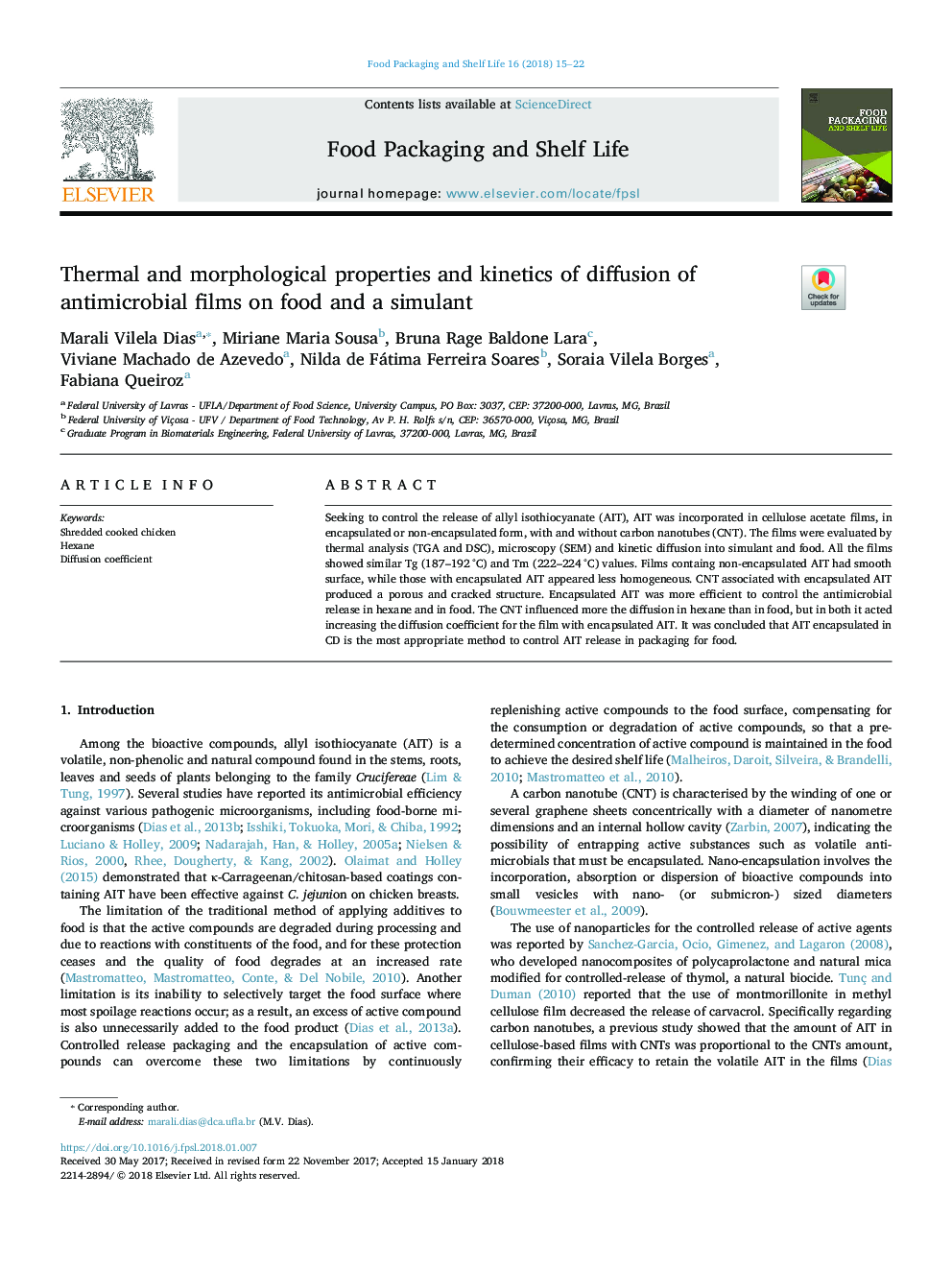| Article ID | Journal | Published Year | Pages | File Type |
|---|---|---|---|---|
| 6489167 | Food Packaging and Shelf Life | 2018 | 8 Pages |
Abstract
Seeking to control the release of allyl isothiocyanate (AIT), AIT was incorporated in cellulose acetate films, in encapsulated or non-encapsulated form, with and without carbon nanotubes (CNT). The films were evaluated by thermal analysis (TGA and DSC), microscopy (SEM) and kinetic diffusion into simulant and food. All the films showed similar Tg (187-192â¯Â°C) and Tm (222-224â¯Â°C) values. Films containg non-encapsulated AIT had smooth surface, while those with encapsulated AIT appeared less homogeneous. CNT associated with encapsulated AIT produced a porous and cracked structure. Encapsulated AIT was more efficient to control the antimicrobial release in hexane and in food. The CNT influenced more the diffusion in hexane than in food, but in both it acted increasing the diffusion coefficient for the film with encapsulated AIT. It was concluded that AIT encapsulated in CD is the most appropriate method to control AIT release in packaging for food.
Keywords
Related Topics
Physical Sciences and Engineering
Chemical Engineering
Bioengineering
Authors
Marali Vilela Dias, Miriane Maria Sousa, Bruna Rage Baldone Lara, Viviane Machado de Azevedo, Nilda de Fátima Ferreira Soares, Soraia Vilela Borges, Fabiana Queiroz,
